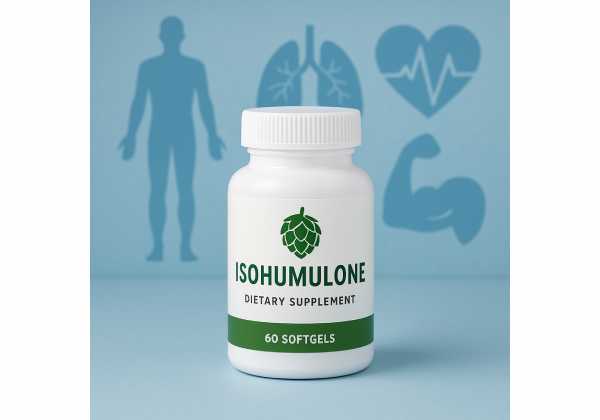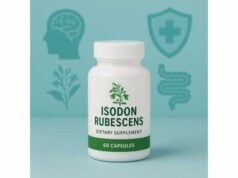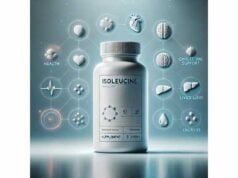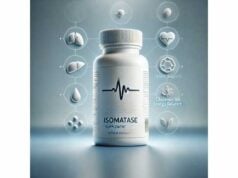
Isohumulone is one of the iso-α-acids that give beer its characteristic bitterness after hops are boiled and isomerized during brewing. Beyond flavor, these hop-derived molecules show biological activity in laboratory and human studies, particularly around metabolic health, inflammation, and cognition. Some trials use “reduced” derivatives (tetrahydro-, hexahydro-, or rho-iso-α-acids) that are more stable to light and foam-friendly; others use natural iso-α-acids or “matured hop bitter acids.” This guide translates the science into practical guidance: what isohumulone is, how it works in the body, where evidence is strongest, sensible ways people use it (including nonalcoholic options), conservative dosing frameworks, safety caveats, and how to evaluate products. You will also learn how isohumulone fits with nutrition and training fundamentals so any supplement choice stays anchored to real-world results.
Quick Overview
- Metabolic and anti-inflammatory support is the leading evidence signal; cognitive benefits are promising but still early.
- Main safety caveats: potential drug interactions and reflux in sensitive users; choose nonalcoholic sources if avoiding alcohol.
- Common supplemental exposure in studies: 32–48 mg/day iso-α-acids or ~35 mg/day matured hop bitter acids (MHBA).
- Avoid use in pregnancy, breastfeeding, children, or with narrow-therapeutic-index medications unless your clinician agrees.
Table of Contents
- What is isohumulone and how it works
- Benefits supported by evidence
- How to use isohumulone in practice
- How much isohumulone per day?
- Mistakes to avoid and troubleshooting
- Safety: who should avoid and interactions
- What the research says: a balanced summary
What is isohumulone and how it works
Isohumulone is a principal iso-α-acid formed when hop α-acids (humulone, cohumulone, adhumulone) isomerize during boiling. The process converts less soluble α-acids into more water-soluble iso-forms—cis- and trans-isomers—which carry bitterness into beer and into hop extracts used in supplements. In addition to isohumulone, two close cousins—isocohumulone and isoadhumulone—are typically present, and many studies analyze them as a family (“iso-α-acids,” abbreviated IAAs). Reduced derivatives (rho-, tetrahydro-, hexahydro-iso-α-acids) are created by hydrogenation or carbonyl reduction to improve light stability, bitterness quality, and foam. Some health studies use these reduced forms because they are more stable and predictable in products.
Mechanistically, isohumulone behaves as more than a flavor compound:
- Nuclear receptor signaling (PPARα and PPARγ). Iso-α-acids act as dual agonists at these peroxisome proliferator-activated receptors involved in lipid oxidation, glucose handling, and inflammatory tone. In practice, this can translate into better insulin signaling, improved lipid profiles, and dampened inflammatory cascades under metabolic stress. Reduced iso-α-acids often retain or enhance these activities.
- Neuroimmune modulation. In models of age- or obesity-related neuroinflammation, iso-α-acids reduce pro-inflammatory cytokines, normalize signaling proteins involved in neuronal plasticity, and improve performance on memory tasks. Human data are emerging, with trials of “matured hop bitter acids” evaluating mood and cognitive outcomes.
- Gut–liver axis and endotoxemia. Some hop extracts enriched for tetrahydro iso-α-acids decrease markers of metabolic endotoxemia (lipopolysaccharide in portal blood), improve intestinal barrier proteins, and shift cytokine profiles toward a less inflammatory state in animal models. These effects likely contribute to downstream benefits on insulin sensitivity and weight regulation.
- Taste receptor (bitter) signaling. Bitter compounds in the gut can trigger hormone cascades (e.g., GLP-1, PYY) that influence satiety and glycemic responses. Iso-α-acids and their reduced forms engage several bitter taste receptors (such as TAS2R1/14/40), supporting a plausible route for appetite and metabolic effects independent of calories.
- Pharmacokinetics. Natural iso-α-acids have modest oral bioavailability and are subject to phase I and II metabolism; reduced derivatives often show somewhat higher oral exposure. Concentrations achieved with typical supplemental doses are compatible with receptor-level actions observed in vitro, but variability across products is real, making standardization and certificates of analysis (CoAs) important for consumers.
Two more practical facts matter for everyday users. First, alcohol is not required: nonalcoholic beers and alcohol-free hop extracts can deliver similar bitter acid profiles. Second, dose is not the same as bitterness: extremely bitter beverages are not necessarily delivering higher, well-characterized amounts of isohumulone; the analytical content (mg/day) is what counts for health goals.
Benefits supported by evidence
Metabolic health (glucose, insulin, body composition). A consistent thread across preclinical and human work is improved insulin sensitivity and glycemic control with iso-α-acids or their reduced derivatives. In a pilot, overweight adults with impaired fasting glucose receiving daily iso-α-acids for 8 weeks saw meaningful reductions in fasting glucose and HbA1c. In obese and diabetic rodents, tetrahydro iso-α-acids (often labeled by suppliers as META060 or THIAA) reduced body-weight gain, fat mass, fasting hyperinsulinemia, and indices of insulin resistance while lowering markers of metabolic endotoxemia. These findings point to two parallel levers: (1) receptor-level shifts at PPARα/γ in metabolic tissues and (2) a gut-liver axis effect that calms inflammatory signaling linked to insulin resistance.
Inflammation and comfort. Iso-α-acids suppress NF-κB–related pathways and reduce inflammatory cytokine production in diverse cell types. Reduced iso-α-acids (RIAA/THIAA/HIAA) tend to show similar or stronger effects in vitro. In living systems, that biochemical signal maps onto lower plasma cytokines in metabolic stress models and, in some small human studies, favorable shifts in inflammatory markers alongside metabolic improvements. While not substitutes for analgesics or disease-modifying agents, iso-α-acids appear to lower the inflammatory “background noise,” particularly in people with diet- and activity-related stress.
Cognitive and mood outcomes (emerging). Trials using “matured hop bitter acids” (MHBA; structurally related but produced under controlled conditions) have reported improvements in attention, processing speed, and mood state in middle-aged and older adults over ~12 weeks at modest daily doses. Mechanisms may involve vagal nerve signaling, noradrenergic pathways, and microglial phenotype shifts. Preclinical studies show that iso-α-acids blunt hippocampal inflammation and preserve memory function during high-fat feeding or amyloid stress. For readers, the take-home is cautious optimism: benefits are plausible and measurable in some trials, but replication and broader populations are needed.
Liver and lipid support (early). In diet-induced fatty liver models, iso-α-acids limit steatosis and inflammatory injury while improving triglyceride handling. The PPAR pathway fits these results, and the endotoxemia findings provide a complementary rationale. Human validation is not yet robust, so translate these outcomes as “promising signals,” not treatment claims.
Body weight and appetite regulation (modest effects). Bitter signaling in the gut can nudge satiety hormones, and some human results show small reductions in body mass index and waist circumference over weeks to months at daily intakes typical of capsules or analytically standardized beverages. These changes are modest—think belt-notch, not makeover—and arise alongside improved glycemia. In the real world, diet and movement still carry most of the effect size; hop bitter acids may help edge things in the right direction.
Cardiometabolic risk clustering. Because the same compounds influence glucose, lipids, inflammatory tone, and possibly central appetite signaling, their net effect can be most visible in people with several mild-to-moderate risk factors (“pre-diabetes,” abdominal adiposity, elevated triglycerides). That is where a small shift in multiple pathways can feel bigger than any single biomarker change suggests.
What this means for you. If your goals include better post-meal glucose control, more comfortable training recovery, or sharper focus with age, isohumulone-containing products may be worth a careful trial—provided you respect dosing, quality, and safety guidance below. If your baseline diet and activity are strong, expect incremental gains; if those fundamentals are weak, focus there first, then consider adding hop bitter acids as a complementary tool.
How to use isohumulone in practice
Choose the right format.
- Standardized capsules or liquids (iso-α-acids or reduced iso-α-acids): These disclose milligrams per serving and specify the form (e.g., THIAA, RIAA, HIAA, MHBA). They are best when you want precise, alcohol-free dosing and predictable exposure.
- Nonalcoholic beer or fortified beverages: Some brands quantify iso-α-acid content per bottle/can. If you prefer beverage delivery without alcohol, these can work—just verify mg per serving.
- Traditional beer: Typical concentrations range roughly from 20–40 mg/L in many lagers to ~50–80 mg/L in hoppier styles; serving sizes and brands vary widely. If using beer for bitter acids, plan for alcohol and calories and keep overall intake modest.
When to take it.
- With meals to support tolerability and possibly complement post-prandial glycemic control.
- Earlier in the day if you notice reflux with evening use.
- Consistently for 8–12 weeks when evaluating cognition, mood, or waistline outcomes; use daily logs for symptoms and simple metrics (waist, resting heart rate, training notes).
How to stack without redundancy.
- Works conceptually with: fiber-rich meals, omega-3s, walking after meals, and strength training—all of which improve insulin sensitivity and inflammation.
- Be careful with: other bitter supplements (overlapping GI effects), strong PPAR-active botanicals (to avoid unknown interactions), and stimulants (to keep heart rate and sleep stable).
Label literacy matters.
- Look for per-capsule mg of iso-α-acids or specific reduced forms, not just “hop extract.”
- Check standardization language (e.g., “contains 32 mg iso-α-acids per serving” or “35 mg matured hop bitter acids”).
- Ask for a CoA showing identity and potency by HPLC, plus contaminant screening (solvents, heavy metals, pesticides).
- Note excipients: if you are sensitive to citrus oils, peppermint, or strong acids used for flavoring, choose simpler formulas.
Who tends to notice benefits.
- People with borderline metabolic markers (e.g., fasting glucose 100–125 mg/dL, waist circumference above goal) may perceive better energy after meals and gradual waist reductions with diet and walking.
- Middle-aged adults with “brain fog” or stress-related distractibility may see small attention gains after several weeks of MHBA-type products.
- Active individuals sometimes report steadier recovery and fewer “puffy” days during heavy training blocks, especially when sleep and protein intake are adequate.
Simple implementation plans.
- Metabolic focus: Start with a standardized capsule delivering 32–48 mg/day iso-α-acids or ~35 mg/day MHBA with breakfast. Pair with 10-minute post-meal walks and a protein-forward lunch.
- Cognitive/mood focus: Choose ~35 mg/day MHBA with breakfast; reassess at week 6 and week 12 using a short attention/mood checklist.
- Beer-based route (occasional): If choosing beer, keep intake to one serving and prefer options that disclose iso-α-acid content. Nonalcoholic versions are preferable for most health goals.
How much is isohumulone per day?
There is no official dietary reference intake for isohumulone or iso-α-acids. Doses used in research and practice cluster around a few clear patterns:
Standardized supplement exposures seen in studies
- Iso-α-acids capsules: 32–48 mg/day has been associated with modest improvements in body mass index, fasting glucose, and HbA1c in adults with elevated metabolic risk.
- Matured hop bitter acids (MHBA): ~35 mg/day for 12 weeks has been used in healthy middle-aged and older adults evaluating attention and mood.
- Reduced iso-α-acids (THIAA/RIAA/HIAA): Animal studies often use diet admixture; human products vary. When available, choose daily totals in the 30–60 mg range as a conservative, evidence-anchored exposure.
From beverages (contextual).
- Many lagers contain roughly 20–40 mg/L iso-α-acids; hoppier styles may reach 50–80 mg/L. One 355–500 mL serving might therefore deliver ~10–40 mg—but alcohol and calories complicate things. For health aims, nonalcoholic options with labeled mg/serving are wiser.
Dose translation rules of thumb
- Start low and steady. If your capsule provides 16 mg each, begin with one capsule daily for 1–2 weeks, then increase to two if needed.
- Time course. Expect 2–4 weeks for subjective changes in energy and post-meal comfort; 8–12 weeks for measurable shifts in attention scores, waist circumference, or fasting labs.
- Ceilings. In self-directed use, avoid stacking multiple hop extracts that add up to triple-digit mg/day without clinical supervision. More is not necessarily better; GI and drug-interaction risks rise.
Special situations
- If you are very caffeine-sensitive, take iso-α-acids earlier in the day to monitor any alertness changes (rare).
- If reflux is an issue, use enteric-coated capsules or take with a substantial meal; avoid late-night dosing.
- If you drink beer, separate supplement doses from alcohol and keep alcohol within or below standard guidance—or choose nonalcoholic.
Putting it together (examples)
- Prediabetes aiming for better mornings: 16 mg with breakfast for 7 days → increase to 32 mg/day; reassess energy and post-meal fingerstick glucose at week 4.
- Cognitive support for a 60-year-old: 35 mg/day MHBA with breakfast; track a simple attention test (e.g., symbol matching) at baseline, 6, and 12 weeks.
- Athlete during heavy block: 32 mg/day iso-α-acids with lunch on training days; emphasize protein distribution and 10–20 minutes of low-intensity cooldown walks.
Remember, isohumulone works best as part of a plan: protein-forward meals, fiber, regular movement, and adequate sleep. If diet and training are inconsistent, prioritize those levers before leaning on supplements.
Mistakes to avoid and troubleshooting
Mistake 1: Chasing bitterness instead of milligrams. Bitterness on the tongue is not a reliable proxy for the actual mg of iso-α-acids you ingest. Two products can taste equally bitter yet deliver different amounts. Fix: choose supplements or beverages that disclose iso-α-acid content per serving and verify with a CoA when possible.
Mistake 2: Using beer as a “supplement.” Traditional beer adds alcohol and calories that can work against metabolic goals. Fix: prefer alcohol-free hop extracts or nonalcoholic options with labeled content if health outcomes are your priority.
Mistake 3: Stacking multiple hop products. It is easy to combine a capsule, a “hop water,” and a bitter beer and overshoot sensible daily exposure. Fix: track total mg/day from all sources and keep the sum modest (commonly ~30–60 mg/day in trials), unless your clinician advises otherwise.
Mistake 4: Expecting drug-like effects without the basics. Iso-α-acids may nudge insulin sensitivity and mood, but they cannot overcome an ultra-processed diet, chronic sleep loss, and sedentary time. Fix: pair supplements with simple habits—protein at breakfast, a 10-minute walk after meals, and two strength sessions per week.
Mistake 5: Ignoring GI feedback. Bitter compounds can occasionally provoke reflux or nausea, especially on an empty stomach. Fix: take with food, split doses, or try a reduced derivative (e.g., THIAA) or enteric-coated form.
Mistake 6: Overlooking medication interactions. Some hop constituents can influence hepatic enzymes or transporters. Fix: if you take prescription drugs—especially with narrow therapeutic windows—clear any new supplement with your clinician.
Troubleshooting guide
- No perceived benefit after 4 weeks: Confirm daily use and total mg; review diet and walking; consider switching to a reduced iso-α-acid formula or MHBA for another 4–8 weeks before concluding it does not help.
- Mild reflux: Take with the largest meal; avoid late dosing; test a different brand with gentler excipients.
- Sleep unsettled: Move dosing to morning; avoid combining with caffeine later in the day.
- Lab tracking: For metabolic goals, recheck fasting glucose, triglycerides, and waist at 8–12 weeks; discontinue if there is no clear, meaningful change.
Safety: who should avoid and interactions
Iso-α-acids are widely consumed in foods and beverages and, at modest supplemental intakes, have a favorable safety record in studies. Still, thoughtful use is essential.
Likely side effects (usually mild and dose-related)
- Gastrointestinal: reflux, nausea, sour stomach—more common with concentrated liquids or empty-stomach dosing.
- Taste/aftertaste: lingering bitterness; often reduced with capsules or food co-ingestion.
- Headache or restlessness: uncommon; monitor timing with caffeine and sleep.
Medication and condition cautions
- Narrow-therapeutic-index drugs: If you take medications where small level changes matter (e.g., certain antiarrhythmics, immunosuppressants, anticoagulants), obtain clinician approval before adding hop extracts.
- Liver disease or significant reflux: Use only under medical guidance; start low and monitor symptoms.
- Allergy or sensitivity: Those with hop or pollen sensitivities should use caution or avoid.
Who should not use without medical supervision
- Pregnant or breastfeeding individuals.
- Children and adolescents.
- People with active peptic ulcers, uncontrolled GERD, or frequent esophageal irritation.
- Individuals with alcohol use disorder (for beer-based routes; prefer alcohol-free extracts if clinically appropriate).
Product quality and authenticity
- Choose brands with third-party testing and published CoAs.
- Prefer products that specify the form (e.g., iso-α-acids, THIAA, RIAA, HIAA, or MHBA) and the milligrams per serving.
- Avoid “proprietary blends” where bitter acid content is hidden.
How to stop safely
- If you experience unexpected rashes, yellowing of the eyes/skin, severe upper abdominal pain, persistent vomiting, black stools, marked palpitations, or any signs of medication toxicity, discontinue immediately and seek care.
- If you simply do not notice benefits after a full 8–12-week trial, stop rather than escalating dose.
Alcohol considerations
- If you use beer to obtain bitter acids, keep intake small and infrequent to avoid offsetting benefits with alcohol and calories. Nonalcoholic options usually align better with metabolic and sleep goals.
Bottom line: used sensibly and at research-aligned doses, isohumulone-containing products are generally well tolerated by healthy adults. The main issues are GI comfort, cumulative alcohol/calories in beer, and potential drug interactions—each manageable with planning and clinician input when needed.
What the research says: a balanced summary
What is most solid today
- Metabolic support: Iso-α-acids (including isohumulone) improve insulin sensitivity and glycemia in several models, with small human studies reporting decreases in fasting glucose, HbA1c, waist circumference, and total fat area at daily intakes of ~32–48 mg. Animal work with tetrahydro iso-α-acids strengthens biologic plausibility by showing reductions in metabolic endotoxemia and pro-inflammatory cytokines alongside better gut barrier markers.
- Anti-inflammatory action: Across cells and tissues, iso-α-acids down-regulate NF-κB–linked signaling; dual activation of PPARα/γ provides a coherent mechanistic backbone for effects on lipids, glucose, and inflammatory tone.
- Cognition and mood: MHBA-based trials have detected improvements in attention and mood in middle-aged and older adults over 12 weeks at ~35 mg/day, and preclinical work shows reduced hippocampal inflammation and protected memory under high-fat feeding or amyloid stress.
Where uncertainty remains
- Dose–response in humans: We still lack well-powered, multi-arm trials testing several dose levels and comparing natural vs. reduced forms head-to-head.
- Long-term safety and interactions: While food history is reassuring, we need more data on long-term, concentrated supplement use, especially with polypharmacy.
- Who benefits most: Early signals point to people with clustered metabolic risks and middle-aged adults with subjective cognitive decline; broader populations and clinical endpoints require confirmation.
How to act on the evidence right now
- If metabolic health is your target, consider 32–48 mg/day of iso-α-acids from a standardized, alcohol-free product for 8–12 weeks, paired with protein-forward meals and daily walks.
- For cognitive support, ~35 mg/day MHBA for 12 weeks is a reasonable, trial-aligned approach—use a simple attention or processing-speed test to judge response.
- Avoid stacking multiple hop extracts or leaning on beer as a delivery system; keep total daily mg modest and alcohol low to none.
In short, isohumulone and related iso-α-acids are credible adjuncts—not magic bullets. Used thoughtfully, they can help nudge metabolism, inflammation, and cognition in a favorable direction while you continue to prioritize the fundamentals that move the needle most.
References
- The Promising Ability of Humulus lupulus L. Iso-α-acids vs. Diabetes, Inflammation, and Metabolic Syndrome: A Systematic Review (2021) (Systematic Review)
- Supplementation with Matured Hop Bitter Acids Improves Cognitive Performance and Mood State in Healthy Older Adults with Subjective Cognitive Decline (2020) (RCT)
- Tetrahydro iso-Alpha Acids from Hops Improve Glucose Homeostasis and Reduce Body Weight Gain and Metabolic Endotoxemia in High-Fat Diet-Fed Mice (2012)
- Isohumulones, bitter acids derived from hops, activate both peroxisome proliferator-activated receptor alpha and gamma and reduce insulin resistance (2004)
- Iso-α-acids, bitter components of beer, prevent obesity-induced cognitive decline (2018)
Medical Disclaimer
This guide is educational and is not a substitute for personalized medical advice, diagnosis, or treatment. Speak with a qualified healthcare professional before starting or changing any supplement, especially if you are pregnant or breastfeeding, have liver disease, reflux, or metabolic conditions, or take prescription medications. If you choose an isohumulone-containing product, select reputable brands with third-party testing, follow label directions, and stop use if you experience side effects or interactions.
If this article was helpful, please consider sharing it on Facebook, X (formerly Twitter), or your preferred platform, and follow us for more evidence-based guides. Your support helps us continue creating clear, people-first resources.










